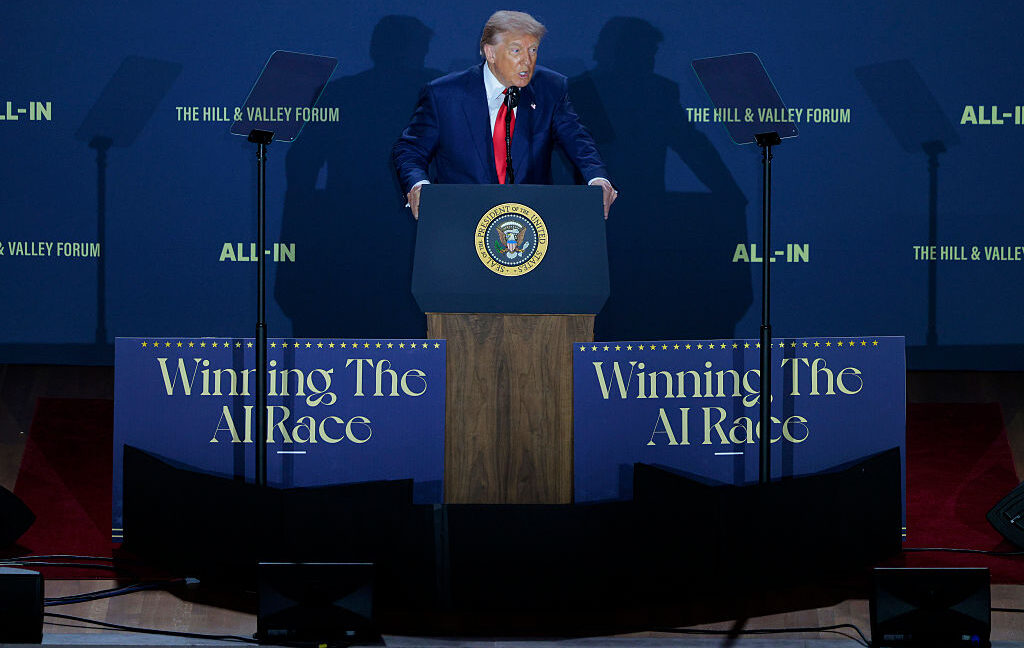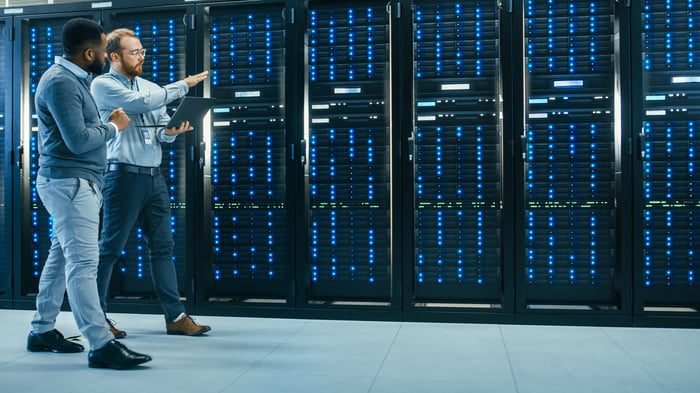5 Brilliant Growth Stocks to Buy Now and Hold for the Long Term
Key Points
Alphabet's AI strengths are being overlooked by the market.
Amazon is using AI behind the scenes to become more efficient and drive growth.
Meta Platforms and Pinterest are both using AI to drive advertising revenue growth.
The artificial intelligence (AI) boom continues to drive growth and transform industries, but it's not just infrastructure players that are benefiting. Some of the best long-term opportunities are with companies deploying AI behind the scenes.
Let's look at five brilliant AI-related growth stocks to buy and hold for the long haul.
Where to invest $1,000 right now? Our analyst team just revealed what they believe are the 10 best stocks to buy right now. Continue »
1. Alphabet
Investors continue to underestimate Alphabet (NASDAQ: GOOG) (NASDAQ: GOOGL), as they worry about AI disrupting its search business. But that view ignores what Google, its major component, actually does. This is a company built around content discovery -- not just traditional search -- and it's integrating AI into tools billions of people already use. And no other company is better at monetizing that content discovery through advertising than Alphabet. Its search data and digital ad network just cannot be matched.
The Chrome browser and Android operating system give it unmatched distribution; Chrome is the default search engine on the majority of devices, giving it a huge built-in advantage. And a recent Oppenheimer survey revealed that users found Google Search's new AI Mode more helpful than not only traditional search but also ChatGPT.
YouTube remains the world's largest ad-supported streaming platform. Google Cloud, Alphabet's cloud computing unit, is growing fast, helping companies build, train, and run AI models.
Google is also becoming a chip leader. Its Tensor Processing Units (TPUs) are helping to power AI development, while its Willow quantum computing chip may be a future growth driver. And Alphabet subsidiary Waymo is expanding its robotaxi footprint.
Taken altogether, Alphabet is one of the most innovative companies in the world, and one you want to own.
2. Amazon
Amazon (NASDAQ: AMZN) is using AI to become even more dominant. While it's best known for e-commerce and cloud computing, the company's behind-the-scenes work is where the real long-term value is being built.
On the logistics and warehouse side, Amazon is using AI to determine where to store inventory, create more efficient delivery routes, and even navigate hard-to-find drop-off points. Its robotics division just passed 1 million deployed units, and some of its AI-powered robots can detect damaged products or even repair themselves. Amazon also created a new AI model called DeepFleet that coordinates its entire robot fleet to help boost throughput.
The company's largest and fastest-growing business is Amazon Web Services (AWS). It helps customers build AI models and apps with tools like Bedrock and SageMaker, and then has them run those programs on its infrastructure. It's also developed custom AI chips that give it a cost advantage, and continues to invest in AI infrastructure to meet rising demand.
Overall, Amazon is well positioned for an increasingly AI-focused world.
3. Meta Platforms
Meta Platforms (NASDAQ: META) owns one of the world's most valuable digital advertising businesses, and AI is making it better. Its Llama models are driving more engagement across Facebook and Instagram, boosting user time spent on the apps. That gives Meta more ad inventory to sell. It's also using AI to help advertisers create better campaigns and target potential customers, which is increasing demand and leading to higher ad prices.
But Meta's growth story is just getting started. The company is only now beginning to serve ads on WhatsApp, which has over 3 billion users. It's also rolling out ads on Threads, its new social platform, which had 350 million users at the end of the first quarter. With two massive platforms still early in their monetization cycles and AI continuing to drive performance, Meta looks like a long-term winner in the AI-powered digital economy.
But the company is not stopping there. CEO Mark Zuckerberg is spending aggressively to poach top AI talent. This is all part of an effort to -- as Zuckerberg says -- "deliver personal superintelligence to everyone in the world." If it's successful, Meta could become the top AI stock to own.

Image source: Getty Images.
4. Pinterest
Meta isn't the only social media company using AI to drive growth. Pinterest (NYSE: PINS) has been using AI to evolve into a more shoppable and advertiser-friendly platform. The company has built a multimodal model that understands both images and text, allowing for better personalization and powering new features like visual search. Users can now click on items within images and shop for similar products directly, making Pinterest far more transactional and more attractive to both users and advertisers.
It's also working to simplify advertising on its platform. Performance+, its new AI-powered ad product, automates everything from campaign creation to targeting and bidding. That makes the platform easier to use for advertisers and helps them save time and drive better outcomes.
Pinterest has a global user base that has historically been undermonetized, especially compared to those of its peers. But with AI improving engagement, search, and ad performance, the company has a big opportunity to start to close that gap. If it can continue executing on its vision of merging content discovery with commerce, Pinterest could be a breakout growth story over the long term.
5. Toast
Toast (NYSE: TOST) has become one of the leading software platforms for the restaurant industry. What started as simply a point-of-sale system is now a full-stack software platform that helps restaurants streamline operations and drive more sales. Its newest tools -- like the AI-powered intelligence engine ToastIQ and the agent and assistant Sous Chef -- are designed to help restaurants make better decisions in real time.
Meanwhile, the company said a restaurant piloting its new menu upsell tool saw average order volume increase by 6%, while another restaurant group testing its new AI-powered advertising tool saw more than a "10x return on ad spend" with Google Ads.
Toast directly benefits from its customers' success, earning a cut of sales through payment processing. That creates a strong alignment between the business and its customers, so the company continues to innovate to help drive restaurant sales. Toast added 6,000 new locations in Q1 and now serves more than 140,000 restaurants. It's also expanding into chains like Applebee's and Topgolf, as well as adjacent verticals like hotel food service and retailers. It's slowly expanding overseas as well.
Toast's pace of innovation and expanding customer base give it a long runway of growth. This makes it a growth stock you want to own for the long term.
Should you invest $1,000 in Alphabet right now?
Before you buy stock in Alphabet, consider this:
The Motley Fool Stock Advisor analyst team just identified what they believe are the 10 best stocks for investors to buy now… and Alphabet wasn’t one of them. The 10 stocks that made the cut could produce monster returns in the coming years.
Consider when Netflix made this list on December 17, 2004... if you invested $1,000 at the time of our recommendation, you’d have $636,774!* Or when Nvidia made this list on April 15, 2005... if you invested $1,000 at the time of our recommendation, you’d have $1,064,942!*
Now, it’s worth noting Stock Advisor’s total average return is 1,040% — a market-crushing outperformance compared to 182% for the S&P 500. Don’t miss out on the latest top 10 list, available when you join Stock Advisor.
*Stock Advisor returns as of July 21, 2025
Geoffrey Seiler has positions in Alphabet, Pinterest, and Toast. The Motley Fool has positions in and recommends Alphabet, Amazon, Meta Platforms, Pinterest, and Toast. The Motley Fool recommends Topgolf Callaway Brands. The Motley Fool has a disclosure policy.








